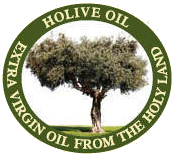
How to check if olive oil is real
Share
With so many reports about fraud in the olive oil industry, it's no wonder people are trying to figure out how to tell if the extra virgin olive oil they bought is real.
Way back in 2013 (more than 10 years ago now, time flies!) scientists at the University of California at Davis debunked a long standing myth that olive oil purity could be checked by putting the olive oil in the fridge. (This myth even featured on a Dr. Oz episode.)
So if the "fridge test" is fake, how can you actually tell?
Your best best is to rely on your own senses.
It might take a little bit of experience to train your palate, but with enough exposure to high quality extra virgin olive oils you can learn to tell on your own if the olive oil you have at home is 100% pure:
1. Look at the color
Pure olive oil ranges from golden yellow to green in color, depending on the type and ripeness of the olives used. If the oil has an unusually light or clear color, it may be an indication of lower quality or potential adulteration.
2. Sniff and taste
Pure extra virgin olive oil has a distinct aroma and flavor. Take a sniff: It should have a fresh, fruity smell. Pure extra virgin olive oil is a pleasure to eat. We call this the lick test: If the oil you have at home isn't delicious, well, it might not be real. Quality extra virgin olive oil is finger licking good.
Swish some in your mouth: it should have a pleasant, slightly bitter or peppery taste. You might notice a slight burn in the back of your throat. This sensation is due to one of the natural compounds called polyphenols contained in extra virgin olive oil. The polyphenol that causes that "peppery" bite is called oleocanthal and it known for its anti-inflammatory properties. With olive oil made from some types of olives, the burn is more noticeable than with others. Find one that works for you and your taste buds.
Why is extra virgin olive oil purity and quality important?
Quality extra virgin olive oil contains a high concentration of a variety of polyphenols. These natural compounds have intriguing healthful properties - scientists have been studying their potential for supporting heart health, fighting high blood pressure, inflammatory conditions like arthritis, and even diabetes, obesity, cancer, and Alzheimer's. Polyphenols are a big part of what makes good extra virgin olive oil taste great.
What to look for
Look for an olive oil that is cold pressed. That means it is made without heat or chemicals. Avoid oil that is refined. Refined means it was made in an industrial process and probably chemically treated.
If you can find an olive oil that is early harvest, even better. Oil made from olives picked early in the season is the most healthful and has excellent flavor qualities.
Look for a container that is opaque (metal or dark glass), because exposure to light damages olive oil.
Read the ingredients! Make sure there is nothing other than olive oil in your olive oil.
It's also always a good idea to read reviews. Though tastes vary, you can learn a lot from the experience of others with a product, and olive oil is no exception.
A recent review for Holive Oil:
"I've been using olive oil for the last 40 years but never had a clue that there's actually an oil that is not overly "greasy", oil that smells and tastes great, oil that can be used for all kinds of cooking, as a salad dressing, with hummus and bread dipping and everything else that requires oil as part of a recipe.
I've been using Holive Extra Virgin Olive Oil from Israel exclusively for just about last 2 years and as long as the quality stays the same I’ll NEVER CHANGE TO ANY OTHER BRAND….NEVER !
I understand, some folks gonna read this short review and say—man, it's just an oil…but I challenge you, check it out, put it to a test in your own kitchen and see for yourself that "not all oils are created equal""



